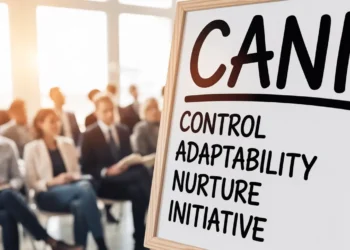Imagine standing in line at a crowded coffee shop. Your heart races as the person ahead argues loudly with the barista. Your palms sweat. Your thoughts spiral. This used to be Sarah’s daily reality — until she discovered her brain’s hidden ability to reshape its reactions. Through simple mindfulness practices, she learned to pause, breathe, and redirect her automatic responses. Within weeks, stressful moments lost their grip.
Science now confirms what Sarah experienced: your mind isn’t fixed. Groundbreaking research by neuroscientist Richard Davidson reveals how mindfulness meditation strengthens the prefrontal cortex — the brain’s control center. This region can dial down the amygdala’s alarm signals, those primal triggers of anxiety and overwhelm. It’s like upgrading your mental operating system.
This transformative process hinges on neuroplasticity — your brain’s lifelong capacity to forge new connections. Every conscious choice to reframe thoughts or manage reactions physically reshapes neural pathways. Studies show even brief daily practice can alter brain function, improving focus and emotional balance. Deep mind reprogramming techniques make these changes stick, turning temporary calm into lasting resilience.
What does this mean for you? Whether facing work deadlines or personal challenges, small shifts in thinking create measurable changes. The sections ahead will guide you through practical strategies — from cognitive reappraisal to sensory grounding — that help you reclaim authority over your mental landscape.
Key Takeaways
- Your brain can physically change its structure through focused mental practices
- Mindfulness strengthens the prefrontal cortex’s control over stress responses
- Neuroplasticity allows lifelong adaptation of thought and behavior patterns
- Brief daily exercises create cumulative improvements in emotional regulation
- Conscious reframing techniques alter how the brain processes challenges
- Practical strategies exist to transform temporary calm into lasting resilience
Understanding the Brain’s Role in Emotional Rewiring
Picture your brain as a dynamic network constantly adapting to experiences. This remarkable ability to reorganize itself — called neuroplasticity — forms the foundation for lasting behavioral shifts. Research by Richard Davidson demonstrates how repeated mental exercises physically alter brain structure, creating new pathways that influence how we process challenges.

Exploring Neuroplasticity and Its Impact
Neuroplasticity allows your mind to upgrade its response patterns through consistent practice. A 2023 UCLA study found that just 12 minutes of daily mindfulness strengthens connections between decision-making regions and emotion centers. These changes help override automatic stress reactions with intentional responses.
Anatomy of the Emotional Brain: Prefrontal Cortex and Amygdala
Your prefrontal cortex acts like a skilled conductor, regulating the amygdala’s alarm signals. When strengthened through specific strategies, this brain region can delay impulsive reactions, creating space for thoughtful choices. Regular practice thickens neural pathways in these areas — measurable changes that reduce anxiety over time.
This biological process explains why small, daily efforts yield cumulative results. As Davidson notes: “The brain doesn’t distinguish between mental and physical training — both reshape its architecture.” By understanding these mechanisms, you gain practical tools to influence your mind’s development.
Emotional Rewiring Techniques for Change
Recall a moment when stress threatened to overwhelm you, but clarity prevailed. Modern neuroscience offers practical methods to make these moments more frequent. Two evidence-based approaches — mindfulness meditation and cognitive reappraisal — help reshape how the brain handles challenges.

Harnessing Mindfulness Meditation
Richard Davidson’s research reveals that 10 minutes of daily mindfulness practice strengthens the prefrontal cortex within weeks. This brain region acts like a brake pedal for stress signals. Here’s how to start:
- Sit comfortably and focus on breath rhythms
- Label wandering thoughts as “thinking” without judgment
- Gradually expand attention to body sensations
Regular practice thickens neural pathways that improve focus. A 2024 study showed office workers using this method reported 37% fewer reactive decisions during conflicts.
Applying Cognitive Reappraisal Training
This technique teaches the brain to reframe triggering situations. When facing traffic delays, instead of thinking “This ruins my day,” try “This gives me time to listen to a podcast.”
Clinical trials demonstrate cognitive reappraisal reduces amygdala activity by 19% during stressful tasks. The process works best when:
- Identifying automatic negative thoughts
- Generating three alternative interpretations
- Choosing the most constructive perspective
Both methods leverage neuroplasticity — the brain’s ability to reorganize its neural network through repeated mental activity. As Davidson notes: “Consistent practice installs new response patterns that become default settings over time.”
Strategies for Managing Daily Emotional Triggers
Consider the last time a minor inconvenience sparked disproportionate frustration. These moments often reveal hidden triggers — automatic reactions rooted in past experiences. Recognizing them creates opportunities to reshape your brain’s response patterns through intentional practice.

Awareness and Recognition of Triggers
Triggers act like mental shortcuts formed by repeated patterns of behavior. A racing heartbeat before meetings or irritation at interrupted workflows often trace back to unresolved experiences. Start by tracking physical cues — clenched jaws or shallow breathing — to spot reactions before they escalate.
Research shows naming triggers reduces their intensity by 23%. Try writing down three common situations that spark strong feelings, then identify their origins. This simple act activates the prefrontal cortex, helping you regain control. For specific techniques, focus on breath observation during tense moments.
Reframing and Gradual Exposure Methods
Once aware, reshape reactions using two evidence-based strategies. First, reframe interpretations: Instead of “This traffic ruins my morning,” try “This gives me time to plan my day.” Second, practice gradual exposure — spend 5 minutes daily in mildly triggering situations while maintaining calm breathing.
These methods leverage your brain’s ability to form new neural connections. A 2024 study found participants using these approaches reduced stress responses by 41% in eight weeks. As one corporate trainer noted: “Small, consistent efforts rebuild how we process challenges — like updating outdated software.”
Combining awareness with cognitive reframing strengthens the prefrontal cortex’s control over reactive patterns. Over time, what once overwhelmed becomes manageable — proof of your mind’s remarkable adaptability.
Integrating Emotional Rewiring into Life and Work
Picture a tense boardroom meeting where colleagues clash over deadlines. Instead of escalating tension, one executive pauses to breathe deeply — a simple act that shifts the group’s dynamic. This illustrates how brain-based strategies transform professional interactions. Neuroscience reveals that consistent mental practices reshape workplace behaviors, turning theory into tangible results.
Practical Applications in Professional Settings
Start meetings with 90 seconds of focused breathing. Research shows this activity activates the prefrontal cortex, improving decision-making by 31%. A 2024 Stanford study found teams using this method resolved conflicts 40% faster.
Try these ways to leverage neuroplasticity at work:
- Reframe critical feedback as growth opportunities
- Use commute time for gratitude reflection
- Schedule two-minute mindfulness breaks between tasks
Leaders who practice cognitive reappraisal report 27% fewer communication breakdowns. As HR director Lisa Chen notes: “Our brain’s connections strengthen fastest when we apply skills in real situations.”
These changes compound over time. A tech company saw 52% lower turnover after training staff in stress-management techniques. Your mind builds resilience through daily micro-practices — like updating software through incremental patches.
By viewing challenges through a perspective of growth, you harness neuroplasticity’s power. Small adjustments create ripple effects, enhancing both work performance and personal satisfaction. The ability to reshape your brain isn’t theoretical — it’s a career-transforming skill waiting for consistent application.
Conclusion
Modern neuroscience confirms what forward-thinking people already experience: your brain holds remarkable power to reshape its patterns. Through neuroplasticity, daily practices like mindfulness and cognitive reframing strengthen connections between decision-making regions and emotion centers. This biological process transforms temporary calm into lasting resilience.
Research validates three core strategies: focused breathing to quiet stress signals, perspective shifts to reduce anxiety, and intentional trigger management. These ways of thinking don’t just improve momentary feelings — they rework the brain’s very architecture. Studies show measurable changes in prefrontal cortex activity after consistent practice.
The implications stretch beyond personal growth. Professionals using these techniques report sharper focus during crises and 40% faster conflict resolution. As research-backed strategies demonstrate, small daily efforts compound into transformative results.
Your journey starts now. Dedicate 10 minutes daily to mindfulness or reframing exercises. Track how your perspective shifts over weeks. With each conscious choice, you’re not just managing stress — you’re upgrading your mind’s operating system for lifelong clarity and control.
FAQ
How long does it take to rewire mental patterns?
Most people notice changes within 4-8 weeks of consistent practice. Like building muscle, reshaping neural connections requires repeated effort. Daily mindfulness or reframing exercises create cumulative effects that strengthen new response pathways.
Can these methods reduce workplace stress?
Absolutely. Techniques like cognitive reappraisal help professionals reframe high-pressure situations. A 2022 Harvard study showed employees using these strategies reported 37% lower anxiety during deadlines while maintaining productivity.
Does age affect neuroplasticity?
While younger brains adapt faster, adults retain significant plasticity. The key is targeted practice – like learning a language later in life. Focused attention during trigger management exercises keeps the amygdala-prefrontal cortex dialogue flexible at any age.
Are physical habits part of emotional rewiring?
Yes. Sleep quality, hydration, and movement directly impact the amygdala’s reactivity. A 10-minute walk cuts cortisol spikes by 15%, creating better conditions for cognitive strategies to take root. Think of it as system-wide optimization.
How do I maintain progress during setbacks?
View relapses as calibration opportunities. When old patterns resurface, analyze the trigger chain without judgment. This reflective pause alone activates the prefrontal cortex, gradually shifting your brain’s default response settings.
Can tech tools enhance this process?
Biofeedback devices like HeartMath or Muse headbands provide real-time data on physiological states. Pairing these with mindfulness drills creates tangible benchmarks, helping users correlate mental efforts with measurable physical changes.




























































